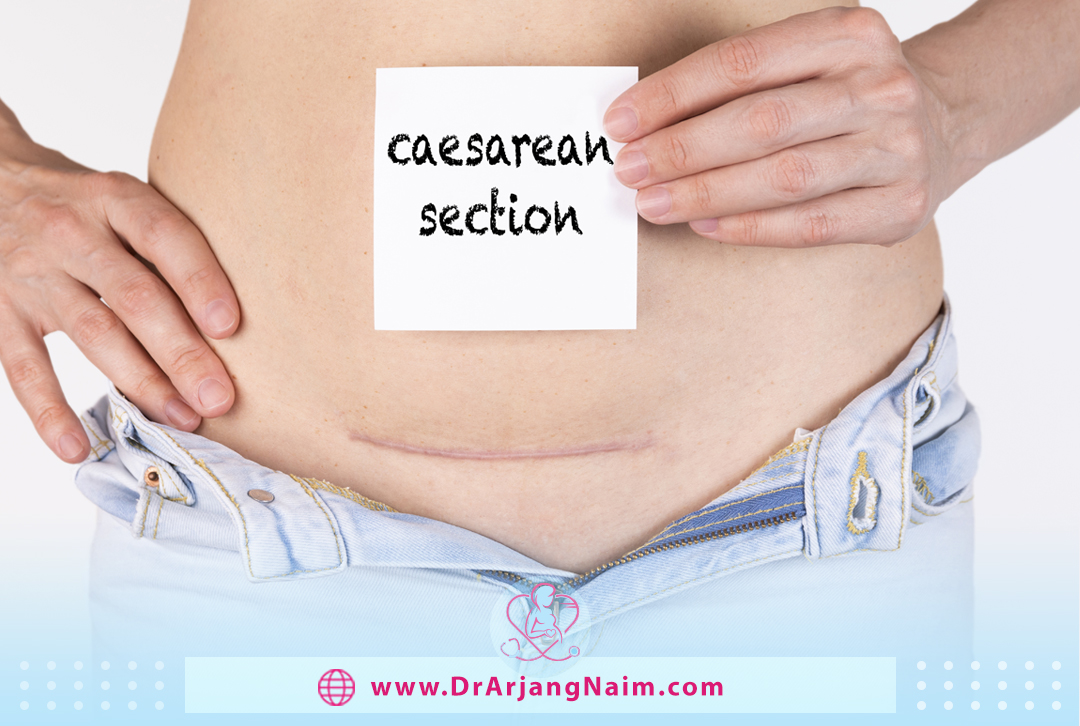Stripping the Membranes, also known as membrane sweeping, is a method that can help stimulate labor in pregnant women who are close to or past their due date. The doctor uses gloves to sweep the inside of the cervix in a circular motion. Stripping the Membranes is effective and safe for most women.
Labor induction
Labor induction, also known as inducing labor, is the Stimulation of uterine contractions during pregnancy before labor begins on its own to achieve normal labor. A healthcare provider may recommend induction of labor for a variety of reasons, primarily when there is a concern for the health of the mother or the baby.
Why is labor induced?
To determine if labor induction is necessary, the health care provider considers several factors, including maternal health, infant health, gestational age, baby weight and size, the position of the baby in the womb, and position of the cervix.
Post-term pregnancy
When a pregnant woman does not give birth normally by the end of week 41 and does not enter the labor phase, labor is diagnosed late. In late labor, the placenta may lose its function and pose risks. In these cases, induction of labor is performed to maintain the health of the mother and fetus.
Prelabor rupture of membranes
If the amniotic sac ruptures but labor does not begin within a certain period of time after the amniotic sac ruptures, the Obstetrician will induce labor to prevent any problems for the fetus.
Chorioamnionitis
The mother has an infection in her uterus.
Fetal growth restriction
The estimated weight of the baby is less than the 10th percentile for gestational age.
Oligohydramnios
Oligohydramnios or low amniotic fluid is an abnormal problem during pregnancy and is caused by a lack of amniotic fluid (water around the fetus in the uterus). Amniotic fluid plays a vital role in the proper development of the fetus, and a decrease in amniotic fluid can lead to the birth of a baby with an unusual and disproportionate appearance. Amniotic fluid usually decreases in the second half of the third trimester, often when labor is delayed.
Gestational diabetes
During pregnancy, some women have high blood sugar levels. This condition is known as gestational diabetes mellitus (GDM). Gestational diabetes usually occurs between the 24th and 28th weeks of pregnancy. If there is poor control over gestational diabetes, it can increase the risk of diabetes in the baby and increase the risk of complications for the mother during pregnancy and childbirth.
High blood pressure
After the 20th week of pregnancy, if not accompanied by symptoms of other diseases, high blood pressure can be a sign of gestational hypertension. Failure to control pregnancy blood pressure in a timely manner can pose risks to the health of both mother and fetus.
Placental abruption
The placenta separates partially or completely from the inner wall of the uterus before delivery.
Certain medical conditions
The mother has a medical condition such as kidney disease or obesity.
How is labor induction done?

Health care providers may recommend one or more different ways to induce labor:
- Amniotomy: During this procedure, the healthcare provider inserts a small plastic probe through the cervix to break the amniotic sac membranes. The amniotic sac contains fluid around the baby. When these membranes rupture, the mother usually begins to give birth quickly because the amount of fluid between the cervix and the baby decreases.
- Stripping the membranes: The healthcare provider places a finger with gloves on the membranes that connect the amniotic sac to the uterus. This releases some natural chemicals called prostaglandins. These chemicals soften (open) the cervix and help start contractions.
- Medications: Some medications help to soften the cervix and start contractions. These drugs include oxytocin and man-made prostaglandins that act like hormones in the body.
- Mechanical methods: These methods include the use of balloon catheters to help the cervix mature.
What to expect before and after stripping the membranes
Doctors perform Stripping the Membranes as part of a regular examination. Women generally do not need to prepare for membrane sweeping, which the doctor does as part of a regular examination. This procedure is usually done in a doctor’s office. The doctor may need to stimulate the cervix to dilate it; otherwise, the membrane may not be removed. This procedure can be uncomfortable, and most women will experience some pain and tenderness afterward. Some women also experience minor bleeding. In severe pain or bleeding during or after the appointment, it is important to tell your doctor immediately.
Risks and safety
Stripping the Membranes is usually safe in uncomplicated pregnancies. However, there are minor risks associated with this technique. This includes:
- Mild discomfort during the procedure
- Minor vaginal bleeding
- Irregular contractions
Stripping the Membranes is the least risky, but it may still not be suitable for everyone.
Who should not have membrane sweeping?

The doctor will most likely decide to membrane sweeping in women who show signs of needing a cesarean. The following factors may also make this method inappropriate:
- Prior cesarean delivery
- Multiple births
- History of preterm delivery
- Current bacterial cervical infection
- Placenta previa
- Active herpes infection
- Abnormal fetal position
- Structural pelvic abnormalities
- Prior uterine rupture
- Severe fetal abnormalities
- Mullerian duct abnormalities
- Vasa previa
Pros and cons of membrane sweeping
The idea of forcing the body to give birth may be daunting, but this technique has been used for decades. When the Stripping the Membranes is used, and labor begins, there is no need to help with labor with drugs such as oxytocin, breaking the water, or using other invasive methods. This is a safe way to speed up labor without increasing the risk of infection. It can also prevent the mother from giving birth by cesarean section.
The disadvantage of membrane sweeping is that the mother may feel uncomfortable with irregular contractions and little bleeding. In addition, if sweeping the membrane causes too many contractions, the uterus may become overstimulated. Excessive contractions can expose the mother to the following risks:
- Irregular fetal heart rate
- Too much pressure on your umbilical cord
- Uterine tear
- Increased risk of cesarean birth
- Fetal death
Natural ways to induce labor

The onset of normal labor does not occur in the same way in all people, and sometimes the labor process does not begin spontaneously without the intervention of a doctor or midwife and the induction of labor pains. While many women give birth to perfectly healthy babies two weeks before or after this due date, it is recommended that women wait at least 39 weeks to give birth. It is best to allow the mother to have a normal body process, but natural methods can also be used to induce labor.
Exercise
Exercise can be anything that raises the heart rate, such as long walks. Even if this method does not work, it is a great way to relieve stress and keep the body strong for the work ahead.
Sex
Sexual activity, especially orgasm, can release oxytocin, which may help initiate uterine contractions quickly. Also, for pregnant women who have sex with men, there are prostaglandin hormones in the semen that may help ripen the cervix.
Nipple stimulation
Stimulation of the nipples can cause the uterus to contract and may cause labor. Nipple stimulation stimulates oxytocin production. Oxytocin is a hormone that causes the uterus to contract and milk to come out of the breast.
Massage
Massage can increase the level of oxytocin in the body, a hormone that can cause labor contractions. However, this should be done under the supervision of a specialist.
The bottom line
In the last months of pregnancy, if your doctor or midwife is concerned about the mother or baby’s health, they may suggest speeding up the process. This is called induction of labor. Instead of waiting for the normal start of labor, the doctor or midwife will use medication or a method to start the process earlier. In most cases, it is best to let the baby determine their date of birth, even if it means waiting another week or two.
Stripping the Membranes is a relatively safe procedure in uncomplicated pregnancies, and studies have shown that it can increase the chance of spontaneous delivery. Before doing anything that may cause labor, consult your doctor to check for possible risks or complications.
After a thorough examination of the mother and fetus, Dr. Arjang Naim, MD, decides whether labor induction is necessary. If necessary, he chooses the best induction method according to the condition of the mother and fetus.
Additional questions
- How long after the sweep does labor start?
This causes the release of hormones called prostaglandins, which help to initiate labor. A membrane sweep increases the likelihood of labor starting within 48 hours.
- What is Chorioamnionitis?
Chorioamnionitis, also known as intra-amniotic infection, is one of the serious infections during pregnancy. In this infectious disease, the chorion and amnion membranes surrounding the fetus become infected and inflamed. This infection occurs when bacteria enter any of the tissues or membranes around the fetus.
- What is Placental abruption?
The placenta is an organ that develops in the uterus during pregnancy. Placental abruption occurs when the placenta separates from the uterus’s inner wall before birth, depriving the baby of oxygen and nutrients and causing heavy bleeding in the mother.
- What is Vasa Previa?
Vasa Previa is a rare pregnancy complication that, if not carefully controlled, can lead to severe blood loss for the fetus. When the water breaks during labor, the exposed blood vessels burst, causing severe blood loss to the fetus or even death. Early diagnosis of vaginal bleeding and cesarean delivery can prevent these complications.
- How do you know labor is 24 hours away?
Although the cervix must be at least 10 cm dilated for a vaginal delivery, cervical dilation of at least 2 to 3 cm often indicates that labor is 24 to 48 hours away.
References:
https://www.medicalnewstoday.com/articles/322701#takeaway
https://www.healthline.com/health/gestational-diabetes
https://www.webmd.com/baby/guide/inducing-labor#1
https://www.verywellfamily.com/stripping-the-membranes-2758960
https://www.healthline.com/health/pregnancy/natural-ways-to-induce-labor#takeaway
https://my.clevelandclinic.org/health/treatments/17698-labor-induction




